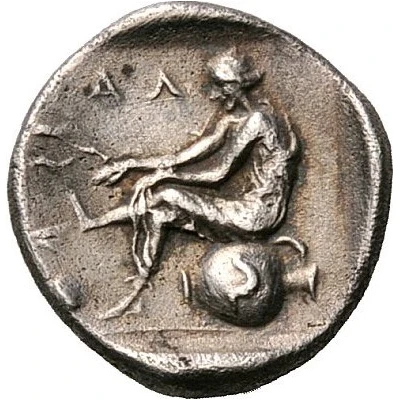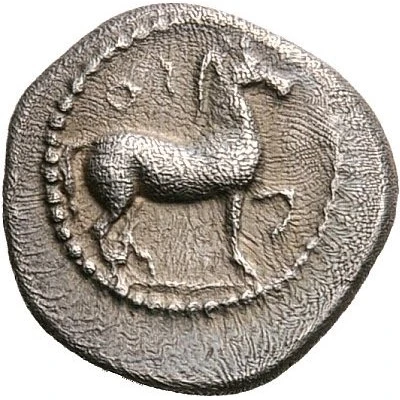


© Nomos AG
Obol 460 BC - 440 BC
| Silver | 1.02 g | 12.5 mm |
| Issuer | Larissa (Thessaly) |
|---|---|
| Type | Standard circulation coin |
| Years | 460 BC - 440 BC |
| Value | Obol (⅙) |
| Currency | Drachm |
| Composition | Silver |
| Weight | 1.02 g |
| Diameter | 12.5 mm |
| Shape | Round (irregular) |
| Technique | Hammered, Incuse |
| Orientation | Variable alignment ↺ |
| Demonetized | Yes |
| Updated | 2024-10-10 |
| Numista | N#170979 |
|---|---|
| Rarity index | 100% |
Reverse
The nymph Larissa seated left, on a hydria with its mouth to right and one side handle facing the viewer, with her hands on her knees, apparently kicking a ball that is to her left on the ground
Script: Greek
Lettering: ΛΑRΙϞ Α
Comment
Herrmann F/G IIIβ VII; Traité IV -; Imhoof-Blumer, Nymphen, p. 72, 200 and pl. V, 30.
Interesting fact
The Obol coin was used as a form of currency in ancient Greece, specifically in the city-state of Larissa (Thessaly) during the 5th century BC. It was made of silver and weighed around 1.02 grams. Despite its small size, the Obol coin played a significant role in the ancient Greek economy, as it was widely used for buying and selling goods and services. In fact, the Obol coin was so valuable that it was often used as a form of payment for workers and soldiers. Today, the Obol coin is a rare and valuable collector's item, providing a glimpse into the economic and cultural practices of ancient Greece.
Price
| Date | Mintage | VG | F | VF | XF | AU | UNC |
|---|---|---|---|---|---|---|---|
| ND (460 BC - 440 BC) | - | - | - | - | - | - |
Values in the table are based on evaluations by sales realized on Internet platforms. They serve as an indication only for Obol (460 BC - 440 BC) coin.



